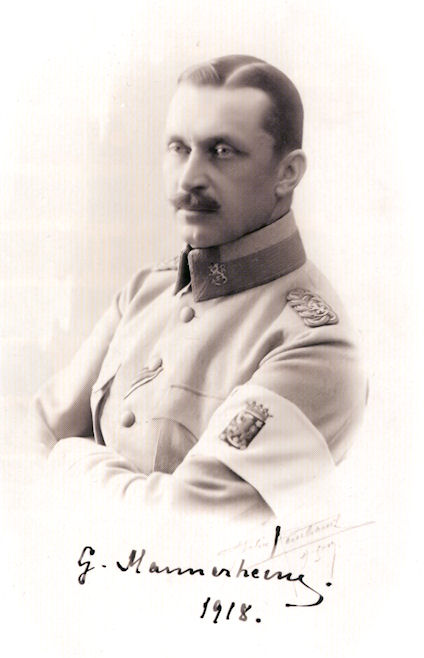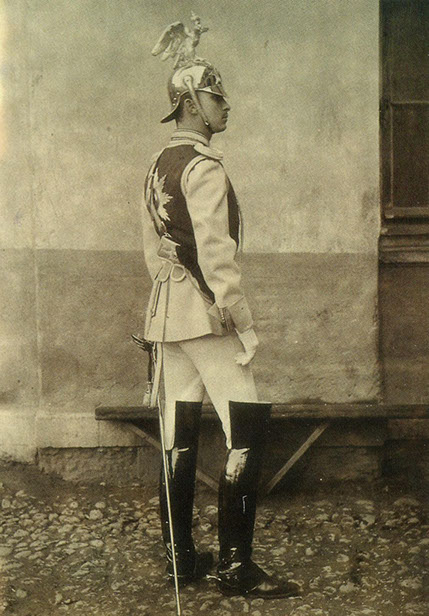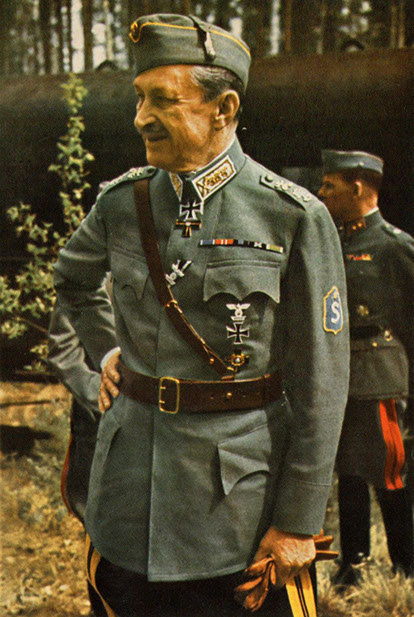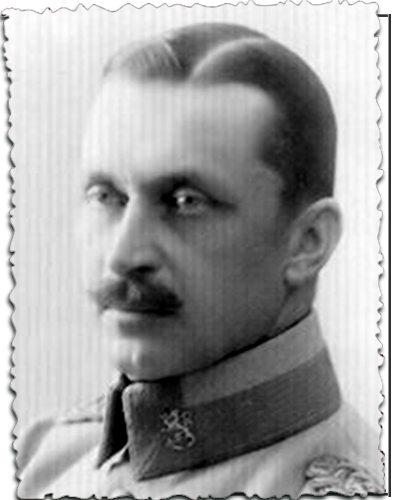



PERSONALITIES
1867 – 1951
MANNERHEIM
CARL GUSTAF EMIL
Commander-in-Chief of the Finnish Army and the Regent of the Kingdom of Finland

Carl Gustaf Emil Mannerheim was born in the Grand Duchy of Finland. He belonged to a famous Swedish noble family. A baron. Mannerheim graduated from the Nicholas Cavalry School (1889). He participated in the Russo-Japanese War and World War I, Lieutenant General (1917). Mannerheim had been remaining a monarchist until the end of his life. The revolutionary events of 1917 caused his extremely negative response, and after the October coup, he resigned from the Russian army. On December 18, 1917, Mannerheim returned to Finland, where November 23 (December 6) saw independence proclaimed.
On January 3 (16), 1918, the government of Finland appointed him Commander-in-Chief of the Finnish army, which he actually was to create. He located his headquarters in the north of the country, in the city of Vaasa, where he began to form military units on the basis of detachments of the Shutskor (self-defense forces) and to disarm Russian garrisons. On January 15 (28), Finnish Social Democrats supported by the Red Guards Russian soldiers staged a coup in Helsingfors. A civil war broke out in Finland.
Mannerheim managed to form a combat-ready 70,000-strong army. With the support of a German Corps that landed in Finland, his army had defeated the troops of the Finnish Socialist Workers’ Republic by mid-May. At the end of May, he resigned and left for Sweden due to a disagreement with the pro-German-oriented Finnish government, which had instructed him to form a new army, in fact, under the leadership of the German military.

On December 12, 1918, after the surrender of Germany, the Government of Finland resigned. The Seim of Finland declared Mannerheim, who was staying in London, as the provisional Head of state, State regent of the Kingdom of Finland.
As Commander-in-Chief of the Finnish army, Mannerheim considered the possibility of an offensive on Petrograd within the framework of the all-Russian anti-Bolshevik movement. To this end, he negotiated with Generals Nikolay Yudenich, Evgeny Miller, and the Supreme Ruler of Russia Aleksander Kolchak. However, the latter was reluctant to recognize the independence of Finland. So, this union was not formed. Mannerheim’s contacts with the leaders of the White movement, among other circumstances, caused his defeat in the presidential elections on July 25, 1919.
Since 1931, he was Chairman of the State Defense Council. In 1939–1945, he was Commander-in-Chief of the Finnish Army, led its actions during the Soviet-Finnish War of 1939–1940 and World War II on the side of Nazi Germany in 1941–1944. In 1944–1946, he held the post of President of Finland.


General Carl Gustaf Emil Mannerheim, Commander-in-Chief of the Finnish Army. 1918.


Carl Gustaf Emil Mannerheim during his service in the cavalry regiment.
St. Petersburg. 1892.
Postcard. Finland. Helsinki. 1970.
SMPHR. F. XV-393

Carl Gustaf Emil Mannerheim, Commander-in-Chief of the Finnish Army, President of the Republic of Finland.
June 1942.
Postcard. Finland. Helsinki. 1970.
SMPHR. F. XV-392







Whites
© 2021 The State Museum of Political History of Russia. All rights reserved. See Website Terms of Use on About Project page




